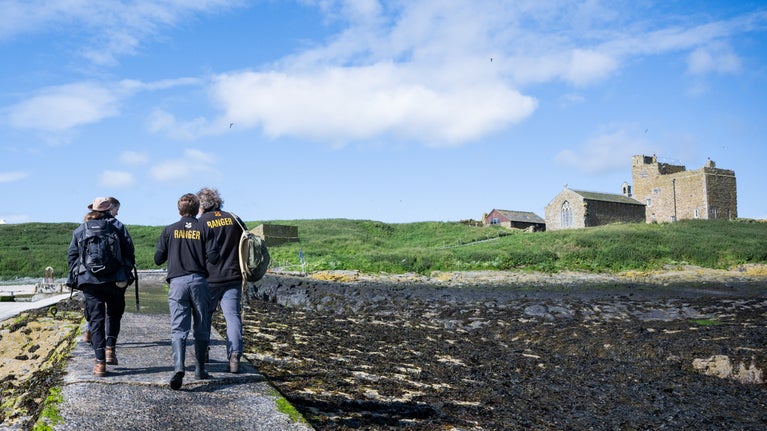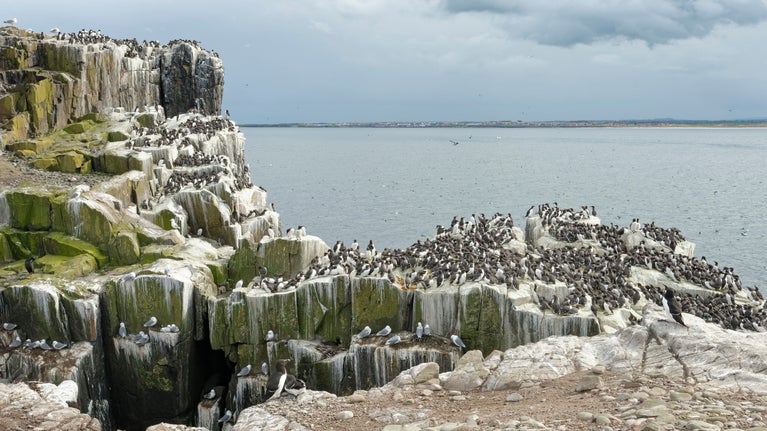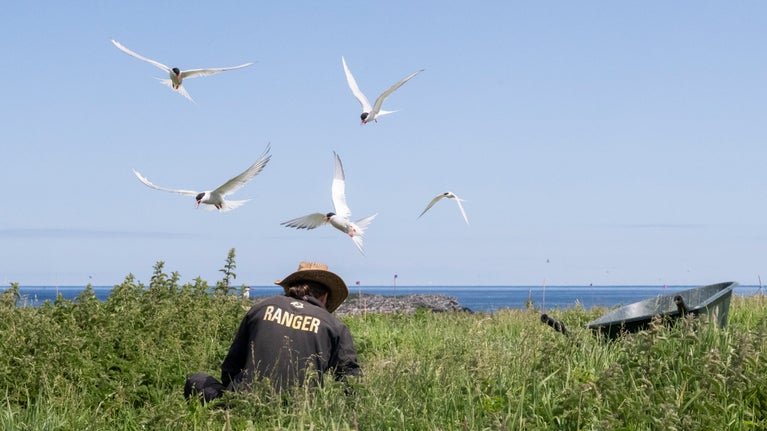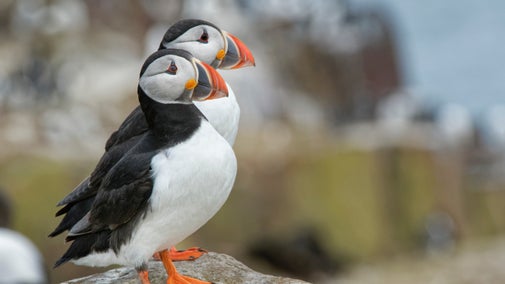Our work on the Farne Islands

Jump to
Have you ever wondered what it takes to look after the Farne Islands in Northumberland? Here, you can find out more about the life of a ranger on the Islands throughout the year. From repairing the boardwalks and welcoming visitors, to creating the best habitats and monitoring the many species who breed here. It's never a dull day.
The science part
While the Farnes are of course an important visitor attraction, their status as a Marine Reserve and Site of Special Scientific Interest (SSSI) means much of our work is dedicated to the study of this crucial habitat.
Here on the Farnes we are keen to monitor the many species that stop by to nest, feed and create such a magical spectacle. Whether it is ringing birds to track their movements, using GPS to tag seals, or simply spotting and recording rare appearances by unusual visitors, our team are always working to manage and maintain this precious environment, which is internationally signficiant due to its:
200,000
breeding seabirds
50,000
pairs of puffins, one of the largest colonies in England
longest running
data set in the world for monitoring its Atlantic grey seal population

The work of our rangers
Our dedicated ranger team spends 10 months of the year looking after the puffins and other wildlife including grey seals, Arctic terns, eider ducks, guillemots and kittiwakes.
Find out more about the varied work they do throughout the seasons:

A day in the life
This time-lapse film was taken during the nest-count day on Inner Farne. You can see the Inner Group team surveying the island tops before the visitors arrive on the island at 1.30pm.
Keep an eye out for rogue curious puffins, a rising tide and the current moving through the Kettle – the channel where boats access the island.
Support our work
You can support the important work on the Farne Islands by visiting our shop in Seahouses or with a donation. As a charity, we rely on supporters to help fund the work we do on the Farnes to protect this important habitat.
With your ongoing support, we're able to continue our vital conservation work. Thank you for helping to protect these special places.
You might also be interested in
Farne Islands Appeal
The Farne Islands in Northumberland are home to the most significant breeding seabird colonies in the UK. With your help, we've been caring for the islands and the wildlife that lives there for the last 100 years, but we need your support to continue to do so.

Seals on the Farne Islands
Learn about the grey seal colony on the Farnes, as well as other seals that call the Islands home.

Our guide to puffins
Every year, thousands of puffins come to the places in our care to breed. Discover more about what they eat, when they breed and the best time to see them.

How to visit the Farne Islands responsibly
We’ve put together some guidelines for you to follow to make sure the wildlife stays safe when you visit, plus tips for taking photos without disturbing the seabirds.

People and nature thriving: Our strategy to 2035
Read about our strategy, which focuses on restoring nature, ending unequal access and inspiring more people.

Our cause
We believe that nature, beauty and history are for everyone. That’s why we’re supporting wildlife, protecting historic sites and more. Find out about our work.
